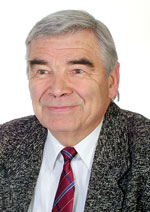Journal of Natural Sciences, 1(1), pp. 01-07.
Abstract
When the function exp is used for diode volt-amperes characteristic, then the volt-amperes characteristic of Solar cells cannot be calculated using standard computer programs. Therefore, special algorithms and programs are developed. If the diode volt-amperes characteristic is described by geometrical progression function of tph, the volt imperial characteristic of Solar cells is described by second grade algebraic equation, which solution is easily calculated by an analytical function. Using the geometrical progression function the calculations of transistor schemes also significantly deteriorates.
Full Text: PDF
Zanevičius, Dr. Donaldas. (2013). The Calculation of Solar Cells with the Function of H – Geometry. Journal of Natural Sciences, 1(1), pp. 01-07.
Kashif Ishaque n, Zainal Salam, Hamed Taheri Simple, fast and accurate two-diode model for photo voltaic modules Solar Energy Materials & Solar Cells 95 (2011) 586–594. Universiti Technologi Malaysia.
P.T. Boogs, R.H.Byrd, and R.B.Schnabet, “A stable and efficient algorithm for non-liner orthogonal distance regression” SIAM J.Sci.Stat.Comput.,vol.8, no.6, pp.1052-78, 1987.
Donaldas Zanevičius Mathematics without sin α, cos α (When Angle α is Being
Measured in Degrees) and π. International Journal of Applied Science and Technology, http://www.ijastnet.com/update/index.php/current-issue,
Archve Vol.2 No.6 June 2012 Full Text.Donaldas Zanevicius h-GEOMETRY Neo-sines in space mechanics, Lithuania, Vilnius. rdi. 2010.

Dr. Donaldas Zanevičius is the President of the Lithuanian Engineers Association. He graduated from the Kaunas Technological University; and his way is that of the Engineering Scientist. In the beginning, he participated in the design and creation of the first Lithuanian computer. In 1962 he established the Microchip Design Institute “Venta”, where he worked as a CEO. This institute was the first to design and produce microchips to become the first Lithuanian-made board computer. Later he participated in establishment of the “Nuklonas” factory.
After his career in the industrial field, Mr. Zanevičius was invited to take position of the Deputy Director for science at the Semiconductor Physics Institute of the Lithuanian Academy of Science, and after a while he became an Advisor to the President of the Lithuanian Academy of Science.
Browse Journals
Journal Policies
Information
Useful Links
- Call for Papers
- Submit Your Paper
- Publish in Your Native Language
- Subscribe the Journal
- Frequently Asked Questions
- Contact the Executive Editor
- Recommend this Journal to Librarian
- View the Current Issue
- View the Previous Issues
- Recommend this Journal to Friends
- Recommend a Special Issue
- Comment on the Journal
- Publish the Conference Proceedings
Latest Activities
Resources
Visiting Status
| 38 | |
| |
277 |
| |
2080 |
| |
6429 |
| 1011840 | |
| 5 |
 The Brooklyn Research and Publishing Institute
The Brooklyn Research and Publishing Institute